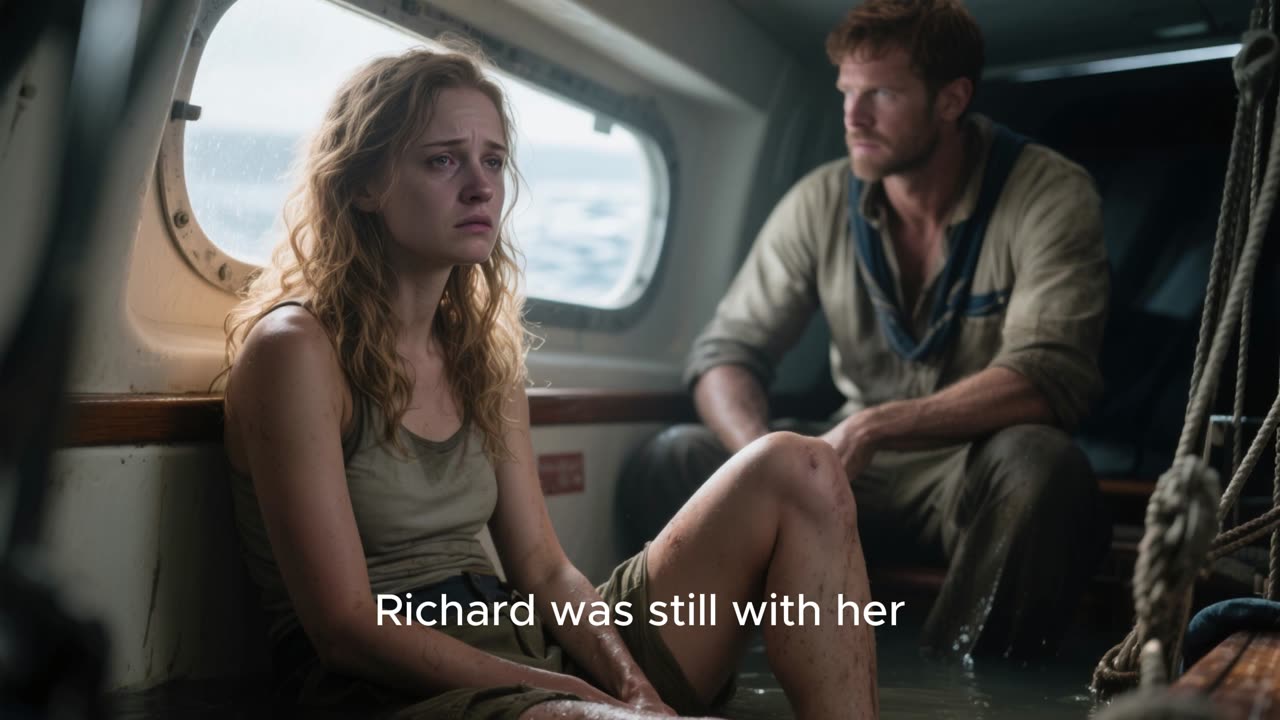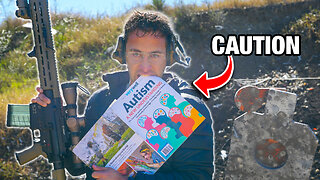Premium Only Content

41 Days Alone at Sea
The sea has always been a place of freedom and danger, a mirror of both beauty and destruction. It calls to those who crave adventure, whispering promises of endless horizons and quiet peace. But the same sea that inspires can also take everything away in a single breath. In 1983, a young woman named Tami Oldham learned that truth in the most brutal way imaginable, when a voyage of love and discovery turned into a fight for survival that would test every ounce of her strength and will.
Tami was only twenty-three years old, full of life and wanderlust, when she met Richard Sharp, a British sailor with an adventurous heart that matched her own. The two shared a deep connection, bound by a love of the ocean and the thrill of exploration. They spent their days sailing between islands, charting their own course through the turquoise waters of the South Pacific. When Richard was asked to deliver a luxury yacht, the Hazana, from Tahiti to San Diego, he invited Tami to join him. It was an opportunity they couldn’t refuse — thirty-four hundred miles across the open Pacific, a journey through paradise.
For weeks, the voyage was idyllic. The sea was calm, the wind steady, and the two of them shared quiet days and starlit nights on deck. They spoke of the future — of marriage, of distant shores, of a life lived beyond the limits of land. But on October 12, as they sailed into the vast emptiness of the Pacific, the radio crackled with a warning. A storm was forming to the north, growing stronger by the hour. Its name was Hurricane Raymond.
At first, they thought they could avoid it. They altered their course, hoping to skirt the edge of the storm, but the sea is a force no human can truly escape. Within hours, the horizon vanished. The wind began to scream, waves rose like mountains, and the Hazana groaned under the assault of nature’s fury. Rain lashed the deck in blinding sheets. The yacht pitched and rolled, tossed like a toy in the hands of the storm. Tami and Richard fought to keep control, securing lines, lowering sails, doing everything they could to survive.
Then came the wave — a monstrous wall of water that seemed to rise out of the darkness itself. Richard shouted for Tami to get below deck, and she obeyed, diving into the cabin just as the wave struck. The sound was like an explosion. The world turned over. The yacht capsized.
When Tami regained consciousness, everything was silent. The air was thick with the smell of seawater and oil. The cabin was half-flooded, sunlight filtering through shattered glass. She called out for Richard, but there was no answer. When she finally climbed onto the deck, she saw that the storm had passed — and the ocean was calm again, eerily calm. The mast was broken, the sails gone, and Richard was nowhere to be found. Only his safety line trailed into the water, cut loose by the fury of the sea.
Tami was alone.
The Hazana was crippled, her navigation systems destroyed, her radio silent. Tami was injured and disoriented, drifting in the middle of the Pacific Ocean with no engine, no mast, and no way to call for help. She had one choice — to survive. She began by gathering what she could: canned food, rainwater, tools, anything that might keep her alive. Using a broken sail and parts of the wreckage, she improvised a makeshift rig, turning the damaged yacht into a ghost ship that could still catch the wind.
For forty-one days, she drifted. The sea stretched endlessly around her, blue and infinite by day, black and endless by night. She fought exhaustion, hunger, and despair. Sometimes she imagined Richard was still with her, guiding her, speaking to her in the quiet moments between waves. It was that voice — real or imagined — that kept her from giving up. She plotted her course by the stars, steering west toward Hawaii, clinging to life one sunrise at a time.
Her hands blistered, her body grew weak, but her mind refused to surrender. She rationed every drop of rainwater, every scrap of food, and when the loneliness became unbearable, she spoke to Richard aloud, promising she would make it — for both of them. The ocean became her enemy, her companion, and her test.
On the forty-first day, just as her strength was beginning to fade, she saw it — a shape on the horizon, faint and shimmering in the heat. At first she thought it was a hallucination, another cruel trick of the sea. But as she drew closer, it became real: land, solid and green, rising from the endless blue. She had reached Hilo, Hawaii, having sailed more than 1,500 miles alone.
When rescuers boarded the Hazana, they found Tami sunburned, skeletal, and silent, clutching the wheel of the boat she had refused to abandon. She had survived one of the most harrowing ordeals in maritime history — a young woman alone against the Pacific, guided only by love, memory, and the unbreakable human spirit.
Years later, Tami Oldham wrote her story in her memoir Red Sky in Mourning, a title that captured both her grief and her triumph. It was not just a tale of survival, but of resilience — the kind that lives within every human soul when faced with the impossible.
The sea had taken the man she loved, but it could not take her courage. In the endless silence of the ocean, Tami Oldham proved that even in the loneliest place on earth, hope can be the strongest sail of all.
-
 10:23
10:23
TheSaltyCracker
16 hours agoMuslims Immediately Threaten New Yorkers After Zohran Win
28.7K409 -
 18:40
18:40
Actual Justice Warrior
15 hours agoMamdani Pledges To DESTROY New York
12.3K40 -
 28:53
28:53
iCkEdMeL
15 hours agoBREAKING: 9 DEAD After UPS Plane BURSTS Into Fireball at Louisville Airport
21.6K7 -
 20:52
20:52
Professor Nez
18 hours agoThe TRUTH is Actually WORSE than we Thought...
9.26K18 -
 8:59
8:59
MattMorseTV
17 hours ago $0.05 earnedTrump’s DIRE WARNING to the Senate GOP.
72.7K81 -
 2:13:33
2:13:33
Side Scrollers Podcast
19 hours agoAsmongold SUED for Emotional Distress + Hasan REJECTED+ INSANE Plane Crash + More | Side Scrollers
87.4K24 -
 21:39
21:39
Nikko Ortiz
4 days agoI Take A North Korean Shooting
79.8K11 -
 23:01
23:01
GritsGG
17 hours agoWarzone Solo Dubular! Last Night Time Solo???
13.6K2 -
 22:47
22:47
The Pascal Show
15 hours ago $0.04 earnedTHEY’RE HIDING EVIDENCE?! Candace Owens EXPOSES Foreign Connection In Charlie Kirk Shooting
22.2K25 -
 LIVE
LIVE
Lofi Girl
3 years agolofi hip hop radio 📚 - beats to relax/study to
279 watching